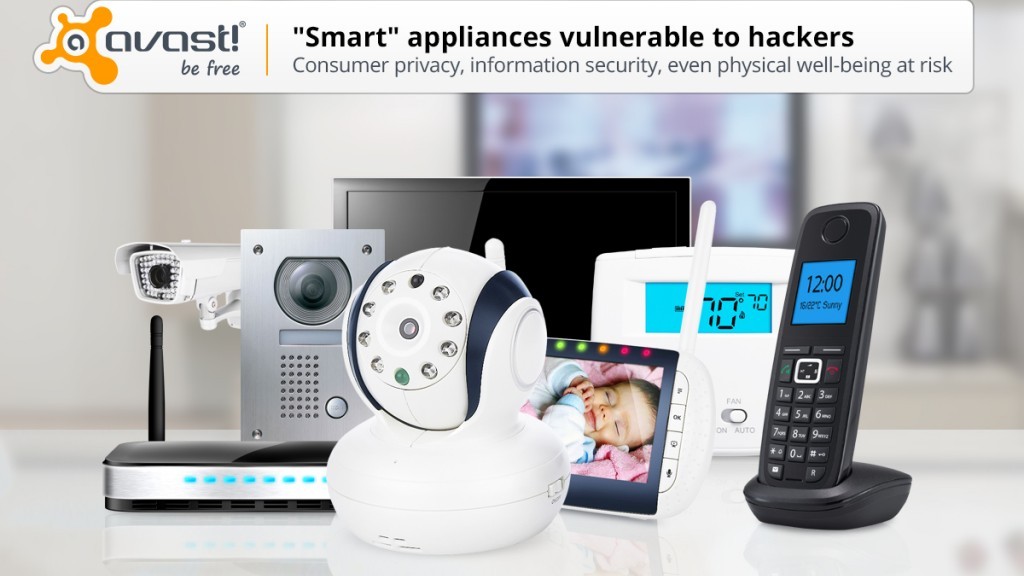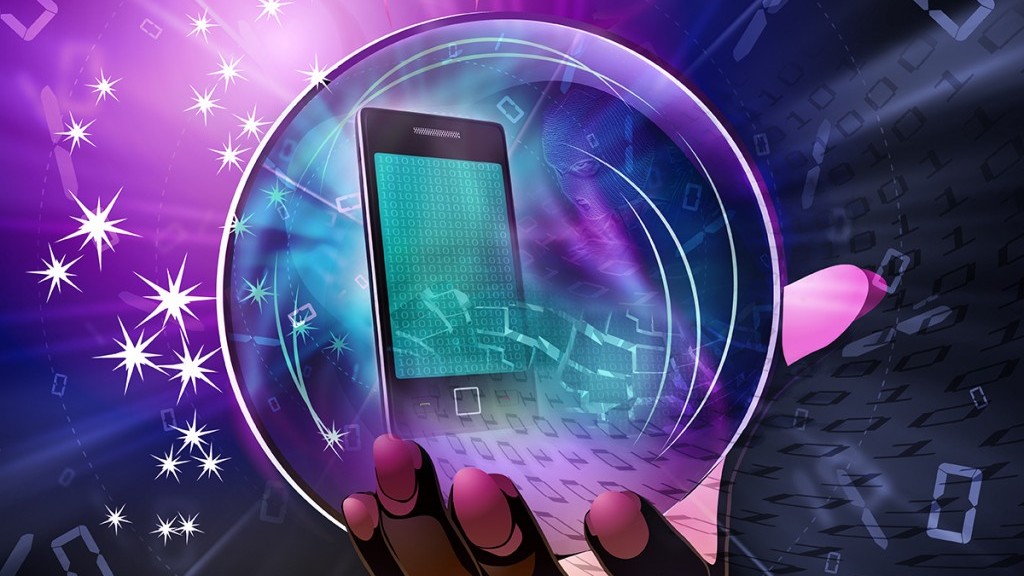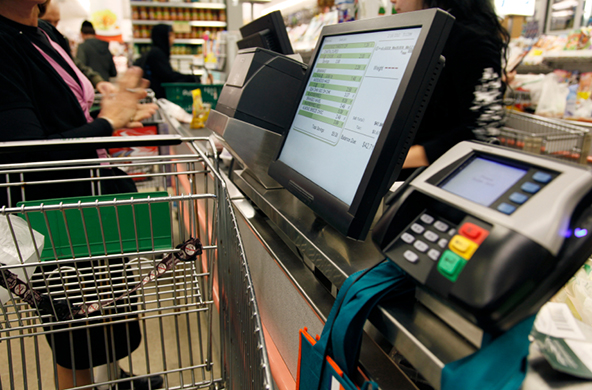Tag Archives: 2015
5 of the most devastating data breaches of 2015
Data breaches got bigger, brasher and more devastating in 2015. In this feature, we look at how some of the biggest came about and the impact they had.
The post 5 of the most devastating data breaches of 2015 appeared first on We Live Security.
![]()
Kaspersky Lab on business threats: 2015 saw the number of cryptolocker attacks double
Kaspersky Lab Statement on Reuters Article Posted on August 28, 2015
Kaspersky Lab Statement on Reuters Article Posted August 14, 2015
More cybersecurity predictions for 2015
Yesterday, we looked at two hot areas to be aware of regarding your online security: Data breaches and mobile security. Today, we’ll look at two more areas that haven’t caused as much trouble or damage as the other two, but are likely to grow in importance.
Internet of (Every)Thing at risk
 The “smart” home has been in the works for some time now, and this year, we’ll see more and more gadgets from household appliances to wearables like fitness bracelets to industrial equipment becoming connected to mobile devices and social networks. This proliferation of inter-connected things will open up a whole new glorious space for hackers to play in.
The “smart” home has been in the works for some time now, and this year, we’ll see more and more gadgets from household appliances to wearables like fitness bracelets to industrial equipment becoming connected to mobile devices and social networks. This proliferation of inter-connected things will open up a whole new glorious space for hackers to play in.
We predict that from now on, devices will increase by an order of magnitude (not too bold a prediction, huh?), and of course, that will result in greater privacy and security concerns. A breach in the Internet of Things (IoT) will give cybercrooks the ability to install malware or ransomware on private networks – not only consumer, but corporate and government – steal personal information, or even cause physical harm to a space or a person. But before you run around the yard yelling, “Skynet is falling, Skynet is falling”, we will see adware uploaded on our smart TVs.
What to keep your eye out for
- New technologies and businesses around the IoT including
o Increased demand for low cost bandwidth and processing
o Expansion of infrastructure that carries Wi-Fi traffic
o Start-ups focused on communication and sensors between devices, storage, data analytics
o Home and factory automation
- The rise of “fog” computing architectures, where data is closer to the source as opposed to residing in a data center somewhere
Room for improvement
- Keeping multiple smart devices updated with the latest version of this-and-that software. You think it’s hard now with a couple of devices? Wait until your house, body, garage, and workplace are full of smart gadgets.
- The fractured ecosystem will make it harder to identify threats or protect against security exploits.
- Home routers are still unsecure and people are using open, unencrypted Wi-Fi. Start by securing your own home router by scanning with Avast’s Home Network Security scan, then follow whatever suggestions are given.
Social media world

By now, social media users know that sharing too much personal information can give strangers access to their personal life. To illustrate that point on a national scale, Allstate Insurance, aired a series of commercials about what happened to a couple who shared on social networks that they were away from their home for the weekend. Read about it on our blog.
Last year, we saw new privacy settings introduced on social media, and 2015 will see a rise in anonymous interactions via social media.
Hoaxes and scams spread by email and social networks were successful in 2014, as they have been for years now, so we see no reason that occurrences will decrease. Social engineering can trick unwitting victims and the rate of identity theft will increase.
What to keep your eye out for
- Continuation of scams associated with important events like celebrity gossip or sporting events.
- Watching videos on Facebook equaled watching videos on YouTube at the end of 2014, so we can expect hackers to take advantage of this by hiding malicious links in Facebook videos.
- More fraudulent and malicious ads will appear on social networks.
- Ransomware made the jump from PC to mobile in 2014, and it will likely hit social networks.
Room for improvement
- Cut back on sharing too much on social media and through Internet of Things devices.
Adjust privacy settings in each social network.
Data breaches and more 2015 cyber security predictions
For a month now, I have been reading predictions for 2015. In the security field, something new and unexpected can always pop up – like the Point-of-Sale (PoS) breaches in early 2014 – but most likely what will happen is just a continuation, that is, a natural evolution, of what has already occurred.
So let’s take a look at some things that will probably happen this year and steps we can take to stay safer. Tomorrow, we’ll look at a few more.
Data breaches will continue
Data breaches made the news in 2014, and in 2015 we will continue to see security breaches of companies, irrespective of size or business sector. These breaches are often caused by software vulnerabilities, advances in data stealing malware, and as we have seen recently with the Sony breach, by states using cyber espionage against other states.
What to keep your eye out for
- Heartbleed and Shellshock were successful at using vulnerabilities in software that we depend upon. We expect to see more of the same in 2015.
- Increase in phishing and social engineering attacks on employees of big companies in order to break in.
- Health care organizations are at risk because many of them use outdated software and have rudimentary security. Plus, there is so much valuable data to be stolen like sensitive patient records.
- More revelations that governments and even companies are using cyber attacks against each other.
- Companies need to tighten up the security processes of their employees, vendors, and third party suppliers who have access to their systems.
- Companies need to adopt advanced threat solutions to secure their PoS networks from breaches.
- Enterprise breach detection methods need to be improved because cybercrooks will likely go after the bigger fish.
- Passwords are not adequate protection for our personal or financial accounts. Two-factor authentication will be adopted more widely, as will new methods like ultra-sonic sound.
- Consumers and companies should update from the old, vulnerable Windows XP.
Mobile is attractive to cybercrooks
Since our mobile phones are as powerful and can accomplish nearly all the things a regular computer can, that gives cybercrooks a relatively easy in-road to your private data and financial information. 2015 will see consumers becoming more aware of mobile security since they will increasingly use mobile apps that contain sensitive banking, financial, and personal health information.
What to keep your eye out for
- Increase in phishing attacks of mobile users. It’s worked successfully so far, so hackers will keep employing methods to trick employees or vendors into revealing login credentials like usernames or passwords, or installing malicious software. Targets will be more high profile.
- iOS security breach on a wider scale. As companies allow executives and employees to use their own handsets, iPhones will become a more lucrative target. Add to that the iCloud Drive sync, ApplePay, and all those fancy new wearable gadgets, and cybercrooks have new attack vectors to explore for the future.
- After the success of the stolen celebrity photos, the cloud has become a pretty interesting target for cybercrooks. Think of all the information we store in the cloud – especially company info. iCloud, Dropbox, Google Drive, and other cloud technologies are vulnerable.
- Compromised Wi-Fi networks will lead to interception and redirection of mobile traffic like voice and SMS using Man-in-the-Middle attacks.
Room for improvement
- Bring-your-own-device to the workplace means that IT security folks need to take a hard, long look at their policies or more data could be at risk.
- Businesses need to work on a Mobile Security defense plan, or run the risk of
exposing the entire organization to threats.
- Security for mobile apps needs to increase. Developers will agree on a way to secure the app’s code as well as the user’s data accessed by their application.
- Comsumers will take responsibility for their devices security by installing software like Avast Mobile Security and Anti-theft.
Happy New Year 2015 from Avast!
From our headquarters in Prague, Czech Republic to our offices in the USA, Germany, China, and South Korea, all of us at Avast Software wish you love, laughter, and peace in 2015.
Looking back on 2014, we are grateful for the trust that our 220 million customers have placed in us. We thank you for your loyalty and for sharing Avast with your friends and family. We appreciate your support, your suggestions and feedback (even when it’s not so good ![]() ), the way you help others on our forum and social channels like Facebook, Google +, and Twitter, and especially when you write us with your stories of how Avast saved the day for you.
), the way you help others on our forum and social channels like Facebook, Google +, and Twitter, and especially when you write us with your stories of how Avast saved the day for you.
As we enter this new year, we promise to bring you the best security products for your home network, your business, your PCs, Macs, and Android devices, that we can. We will stay on top of new threats and contain the old ones that keep coming back to plague us. We will strive to keep your trust, but most of all, to keep you and your important data and hardware save from harm.
So raise your glass with us, and join us for our 2015 wish.
Peace. Love. Security. ~ from Avast
How technology will change the way we behave in 2015
As 2014 comes to an end, it is time to look ahead to 2015. This year though, rather than give my predictions about emerging technology, my mind is drawn to our behavior and the changing the way we actually interact with technology.
There are three areas in which I foresee the most change during 2015 thanks to increased public interest and acceptance:
We will start using privacy based solutions

The discussion about privacy; my right to be me and own my data has been gaining momentum in the last five years. We are rapidly losing control over our personal data and identities in today’s fast moving digital world. The advertising world collects ever more data to try and predict our needs based on who we are and our behavior. 2014 has shown us that our online identity isn’t safe from advertisers, hackers or even governments.
So the problem of who controls my identity becomes more and more interesting to the actual owners – each and every one of us. . Laws around how to keep and secure data, and restrictions about sharing it are on the way through movements like the Right to Be Forgotten.
In the passing year we have seen lots of solutions focusing on sharing using “Privacy by design” to be the key feature, apps like Snapchat , Whisper, Secret, Tinder, Tumblr, the Silent circle messaging and their Blackphone. These applications are chat, photo sharing and social media where the privacy and trust is built in.
So the market demand for privacy oriented solutions is there and the technology has existed for several years. The missing key ingredient that will drive it into the mass market is how business can make money from privacy. In the next year I expect to see more and more monetization concepts to make money from solutions that provide anonymity and privacy. The market demand is there and the technology is there…
We will fall in love with electronics (again)

Since the 90’s, the idea of a connected smart home has excited millions. The idea of an electric light that will turn on when you step in the room and you can close with a clap is not new. But it is only in the last year that the idea of Internet of Things has really started to be feasible.
The good news is that electronics are back and so is software. After all it is through software that we interact with devices and makes them seem exciting and new. Over the last 15 years we have tried to create value in software by adopting various business models. From the Freemium model, giving limited functionality and then charge when features are added through the models that monetize through Google Ads and search up to the SaaS models where it is not the software you pay for but a service that comes with it…

In 2014, we saw Fitbit emerge as a leading wearable device, and a big part of this is software that makes it seem very personal to every one of us. It was the same with the GoPRo camera – transferring a simple camera into high end extreme sports filming equipment. In 2015 I expect many devices will evolve to become connected and take on new roles in our digital world. Software will be an important factor in deciding which devices are successful, it’s through software that devices become personal and relatable.
We will search less and discover more

Since the beginning of the internet, search has taken a cardinal place in our interaction with data. First Yahoo and then Google made sure our homepage is a search page.
Microsoft went on and translated this behavior into the application on the PC, and now we have a search box almost in everything and everywhere…
With Adwords technology Google cracked the way to monetize search behavior. The search term that the user enters translated to ads that the user wants at that moment.
Smartphones arrived and quickly become a main vector for search, both of the Internet and of ever growing app stores. Importantly they also heralded the arrival voice recognition technologies and of voice search. But as technology advances there is a quest to predict the search. To analyze requests and behavior so that the information we seek is already there waiting for us. We can see it in action with programs like Google Now that collects information about you from a range of sources and tries to predict what you need, whether it’s directions to work, your flight times that day or what the weather will be like.
But in less obvious move, many successful mobile apps have removed the search field and actually providing people with suggestions or things to discover as a way increasing engagement as well as servicing and increasing the value of apps and services.
There are many examples of this discovery mechanic in online news where services like Outbrain and Tabula offer more content to people who read news, and monetize through pay-per-click
Other examples of discovery replacing search are popular apps like Instagram, Flipboard and Facebook where people are encouraged to roam and discover news, pictures or friends.
Perhaps the best example of this is Tinder where rather than searching for match, the app makes constant suggestions that the user accepts or rejects
I think in 2015 we will see this trend getting stronger and more apps and services will increase the promotion of content to their customers as a way to keep them interested in using the application or service.





